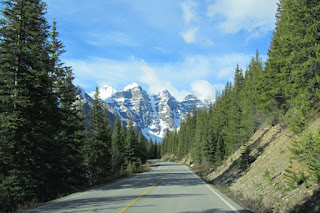 |
| Icefield Parkway, Alberta |
After nearly a couple of astounding weeks in British Columbia and Alberta, Canada my wife and I are now back home. The scenery and wildlife were just amazing, especially the bears like the one below seen just a few metres away from us. Although I only managed about an hour of shallow sleep on the plane back from Calgary last night I decided it was better to fight the jet-lag and get on with some chores rather than crash out and wake at 2am tomorrow.
 |
| One of the 8 black bears we encountered - this one VERY closely |
Once the lawns have been trimmed and the hedge cut, I've decided to crack on with the design of a new transverter for 472-479kHz as the next project. Already there is activity from Germany and there are a number of NDB beacons to allow the receiver part to be checked. Jan 1st 2013 (the likely date of release in the UK) will arrive far too soon.
I am trying to decide on the choice of IF as I want to use an unmodified FT817. 28MHz will allow 472-479kHz to appear "in-band", but at 28MHz the start-up drift as the LO settles will still be some tens of Hertz. This hasn't proved problematic with WSPR, so guess this is my choice. At least the dial will directly read the "right" frequency e.g. 28.477kHz will correspond to 477kHz.
In view of the picture above, I am not sure what power the transverter will use bear-foot (sorry, weak joke).








